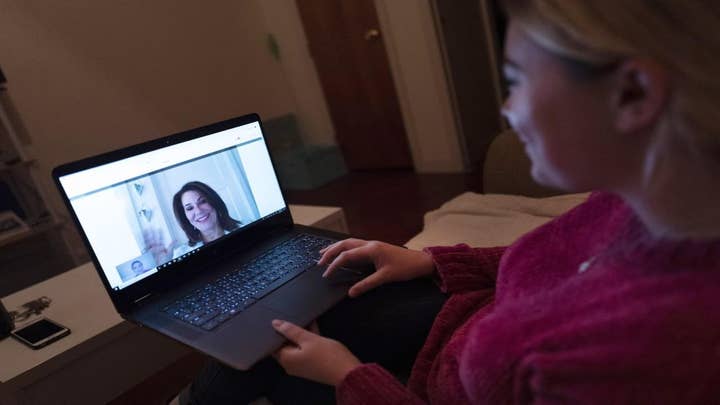'Zoom-bombing': FBI warns some teleconferences, online classrooms vulnerable to hackers
As teleconferences gain popularity during COVID-19, learn the risks and how to avoid security threats. Learn the FBI’s tips for staying secure online, amid Zoom hacker allegations during the pandemic.
Get all the latest news on coronavirus and more delivered daily to your inbox. Sign up here.
Tammy Sun, the quintessential Silicon Valley tech entrepreneur, fired off an uncharacteristically low-tech Tweet recently. “Zoom fatigue has me wanting a landline and a rotary phone,” wrote the founder and CEO of Carrot, a startup that provides fertility benefit plans for companies.
Ms. Sun likes Zoom a lot. In fact, she says she’s a “power user,” spending nine out of 10 conversations on it, six days a week. The hours aren’t the problem, she says, it’s the real-time image of herself on the Zoom grid, reflecting her every move as if she were in front of a mirror. “I’m flat-out not used to that,” she says.
The affliction that’s come to be known as “Zoom fatigue” is way more than a byproduct of too many meetings. Social scientists say it’s the result of the sudden mass adoption of technology that’s disrupting the normal, instinctual and finely-tuned way of communicating that developed to help humans survive.
“We’ve evolved to get meaning out of a flick of the eye. Our species has survived because we can produce those signals in a way that’s meaningful,” says Jeremy Bailenson, professor and director of Stanford University’s Virtual Human Interaction Lab. “Zoom smothers you with cues, and they aren’t synchronous. It takes a physiological toll.”
Before the pandemic, Zoom was barely known to the public. The 9-year-old company served mainly businesses, hosting lots of webinars and training. In recent months, it has become a staple in many households, growing from 10 million people attending meetings at the end of last year to 300 million in April.
CLICK HERE TO GET THE FOX NEWS APP
It has connected friends and families, and kept businesses going. It’s unclear how much it’s been hurt by its recent trouble protecting data privacy or preventing trolls and hackers—problems it has said it would fix. It has taken off, overshadowing competitors like Cisco Webex, Microsoft’s Skype, Apple’s FaceTime and Google Meet, because it was built explicitly to make video conferencing easier and more intuitive. Because Zoom had a basic service that was free and could handle meetings of 100 people, it became a gathering place for those that coronavirus prevented from meeting in person.
So what explains the widespread love-hate with Zoom? The frustration isn’t unique to it. Many of the annoyances about video conferencing stem from the fact that it’s not as perfect as person-to-person.


